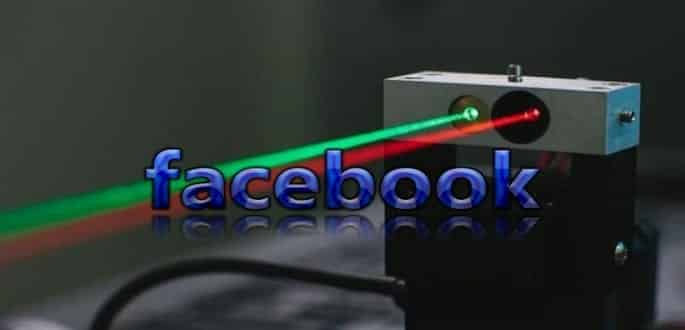Facebook finds a way to use lasers to send data at 2.1 gigabits per second
Engineers from Facebook’s Connectivity Lab have designed a laser detector that helps deliver fast, cheap internet to remote areas.
“A large fraction of people don’t connect to the internet because the wireless communications infrastructure is not available where they live, mostly in very rural areas of the world,” said Connectivity Lab’s Tobias Tiecke, who led the team in writing a paper that was published in the journal Optica.
“We are developing communication technologies that are optimised for areas where people live far apart from each other.”
As lasers can hold huge information and are able to broadcast it a long way, they are a smart way to transmit data over significant distances. Also, more than one laser can be used in the same area without any disturbance, as they use line-of-sight light transmission. Additionally, they can be used to set up makeshift data links to off-grid locations, as they do not need committed spectrum like cellular networks.
However, the detectors used to catch the light signals have to be small in order to attain high data rates. The problem is that as beam of light spreads through space, it becomes wider—in fact, orders of magnitude are broader than the detector itself. While making use of optics, it’s possible to focus the light back down, but it is complicated and expensive. Therefore, in its place, engineers from the Connectivity Lab have built a system that effortlessly tries to address the problem.
The fluorescent optical fibers absorb blue laser light and re-emit it as green, directing it toward a small photodetector in the process.
The engineers have explained in the journal how instead of traditional optics, they have made use of fluorescent materials to accumulate light from data-carrying laser beams. A chain of plastic optical fibers, tampered with organic dye molecules that absorb blue light and re-emit it as green light, are shaped into an almost-sphere. When a laser signal hits the fibers, they release green light within two nanoseconds. The light travels down the length of the fibers and is finally directed toward a small and fast photodetector.
While the system until now has been utilized to receive signals carrying data at rates of up to 2.1 gigabits per second (Gbps), the team claims that if it were developed to absorb infrared, rather than blue light, it could go more quickly.
This is not the first time that Connectivity Lab has created such a piece of hardware. It is famously known for its working on a solar-powered drone to deliver Internet access, which is progressing slowly at the moment. So, even though the team who is behind the creation of the new laser device has plans to test it in a real outside world, there is probably some development ahead before it is used on a wider scale.
However, in order to take data to the sticks, the social network is busy chasing lot of other projects. The most notable among them is Telecom Infra Project, which will make use of open-source cellular networks to attain similar results. Probably, anyone will be able to sign up on Facebook in this way.
Source: MIT Technology Review

